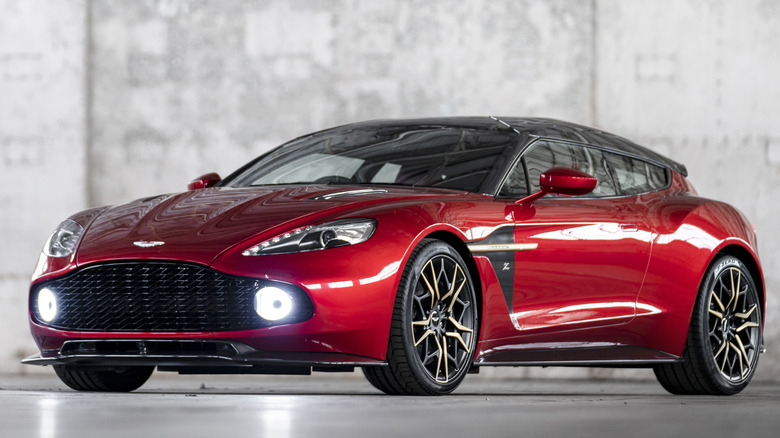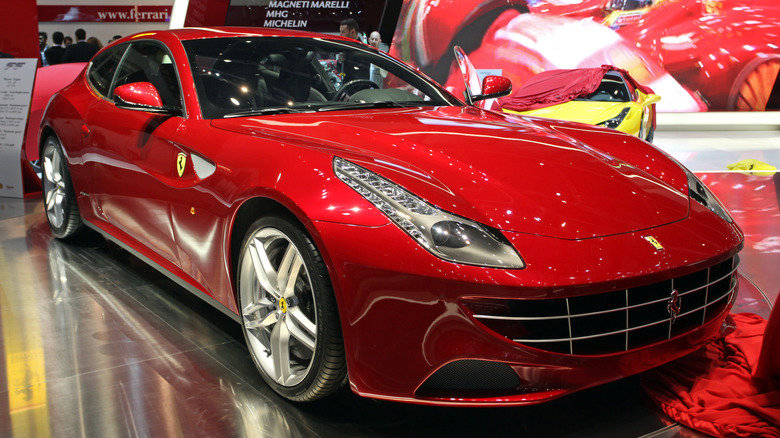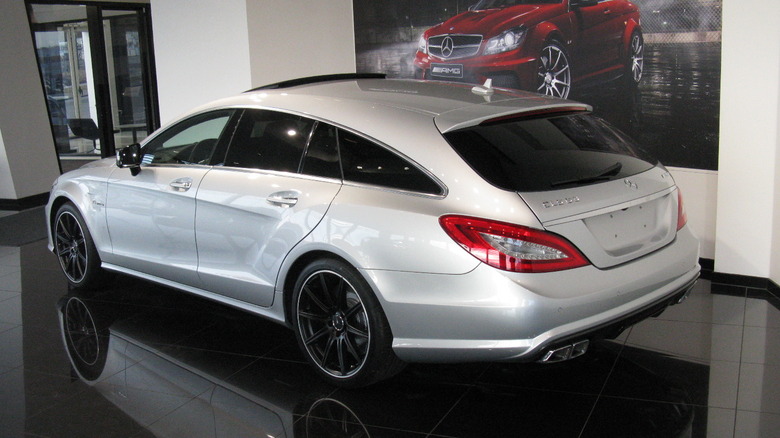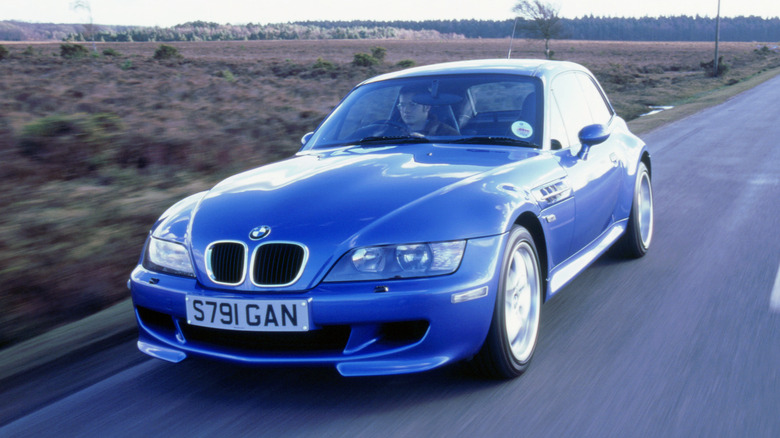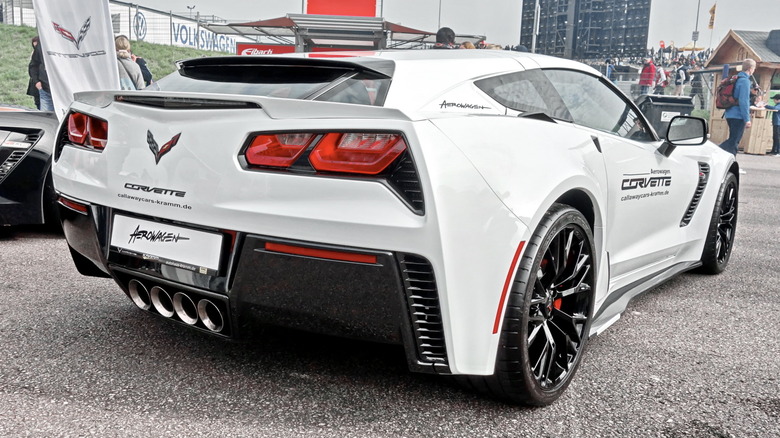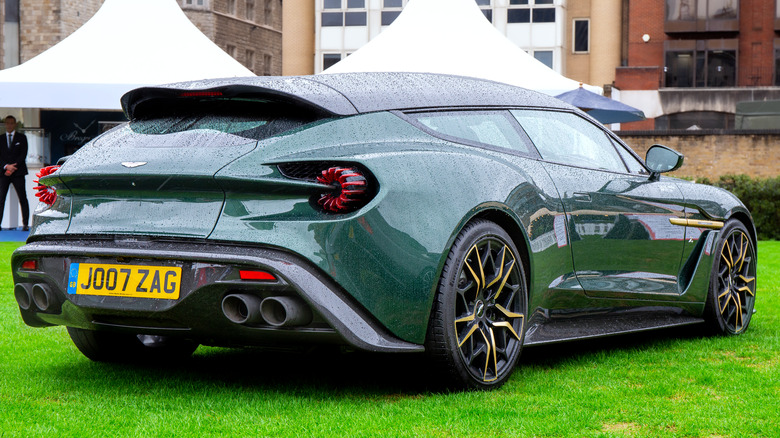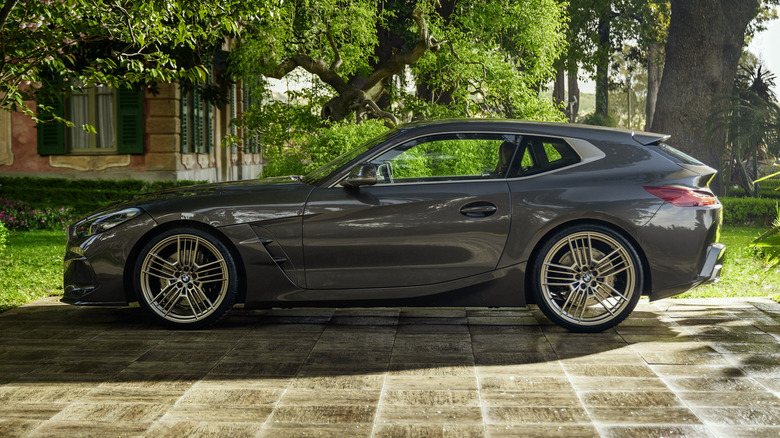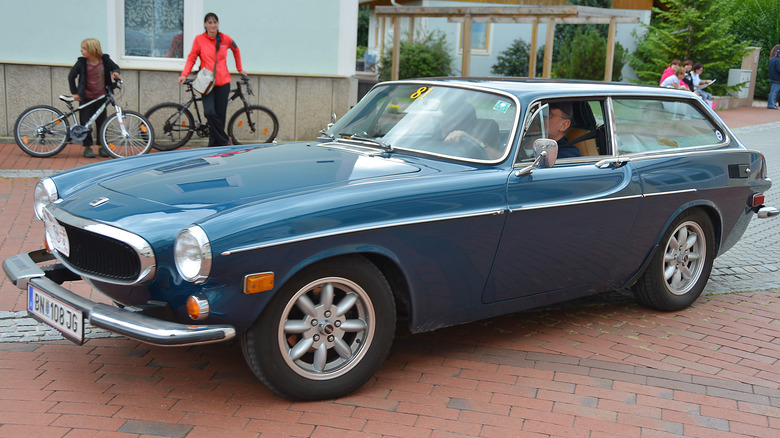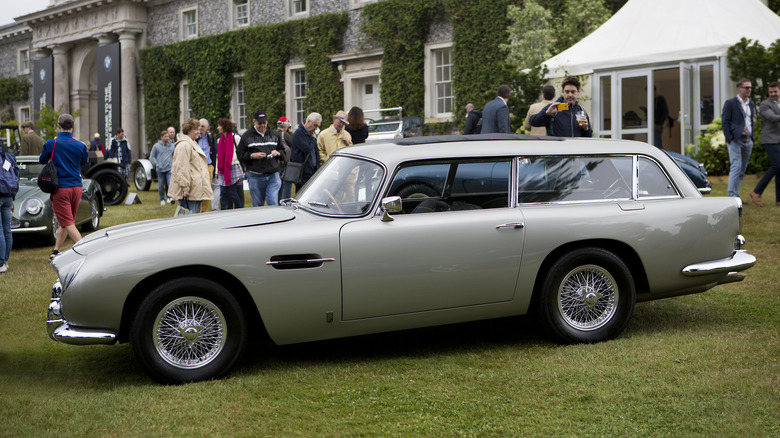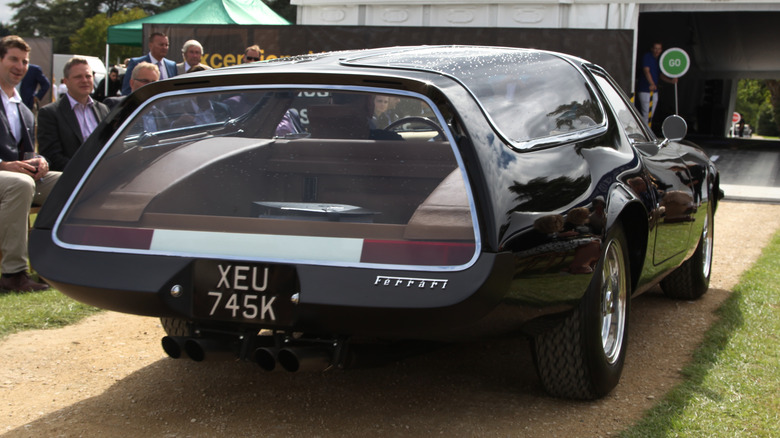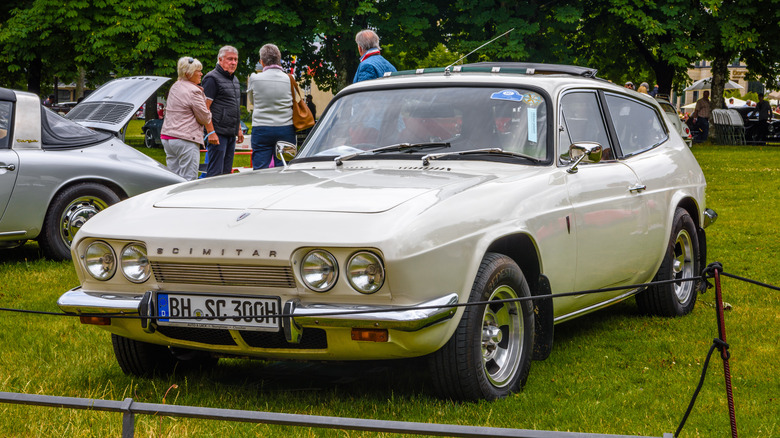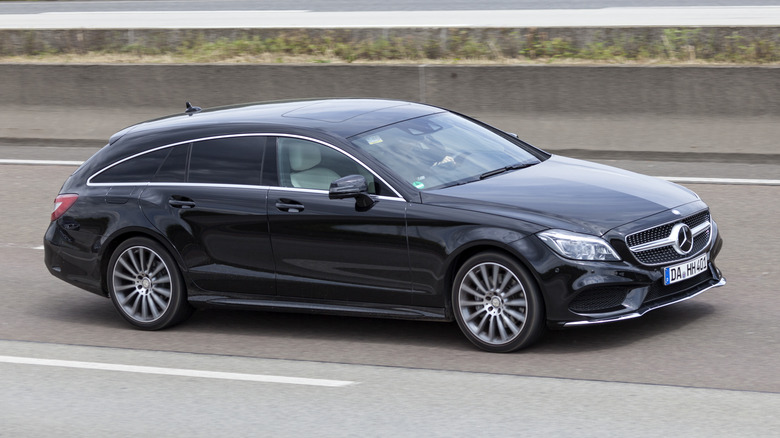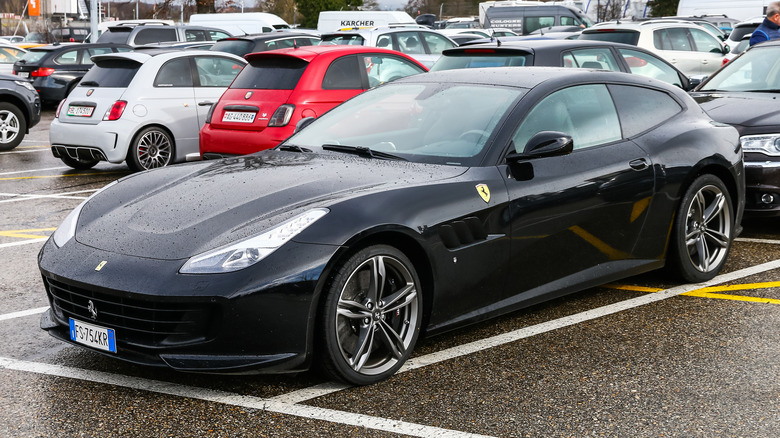The 12 Best Shooting Brake Cars Ever Made
The term "shooting brake" isn't quite as easy to define as it might seem. Historically, it was used to describe any vehicle designed for hunting, but it's been broadened over time to include any sports car that features a wagon-like rear end for added practicality. Traditionally, shooting brakes had two doors, but recent offerings from the likes of Mercedes-Benz have marketed four-door vehicles as shooting brakes, using the reasoning that they're based on the brand's "four-door coupes."
While the definition of what constitutes a shooting brake is a little blurred, one thing remains clear: they've always been enthusiasts' favorites, with many of the most famous models gaining cult followings. Like many traditional body styles, shooting brakes are at risk of extinction as the rise of the SUV means automakers are cutting back on lower-selling body styles in search of higher profits. They're already a rare breed, but unfortunately, it seems like they might be getting even rarer soon. Carmakers ranging from Volvo to Ferrari have churned out shooting brakes over the years, but here are the very best to date.
Ferrari FF
Ferrari might be most closely associated with sleek coupes and race-ready roadsters, but the Italian automaker has also produced or overseen a handful of shooting brakes over the years. The FF is one of the best, in part because, unlike most previous Ferrari shooting brakes, it was available as a series production model. It was also packed with innovative features that made it unlike any production Prancing Horse before it.
Chief among those was the four-wheel-drive system, the first of its kind on a Ferrari. Famed F1 designer Mauro Forghieri designed the brand's first four-wheel-drive system in the '80s, but it took until the first FF rolled off the production line in 2011 for it to appear in a production vehicle. The FF was also the brand's "practical" offering, with room to seat four adults, and up to 450 liters (15.9 cubic feet) of trunk space. It was replaced in 2016 by the similarly styled GTC4Lusso.
Mercedes-Benz CLS 63 AMG Shooting Brake
Although it's making efforts to trim the fat over the next few years, for now, Mercedes-Benz still boasts one of the most sprawling global lineups of any carmaker. Sadly, though, that lineup no longer includes the CLS 63 AMG Shooting Brake, which was the AMG variant of the shooting brake variant of the four-door coupe variant of the E-Class. Still following? As extremely niche as it might have been, the ingredients were all there for a hit: a twin-turbo V8 making 550 horsepower, a swooping design, and just enough room to carry a family of four and their luggage.
With so many other AMG-fettled offerings in Mercedes' lineup at the time, the CLS 63 AMG Shooting Brake struggled to make much of an impact and was killed off after just a single CLS generation. Prices for the limited examples that were sold have now depreciated to temptingly affordable levels, especially given the automaker's recent U-turn on building niche cars means that there's unlikely to be another Mercedes shooting brake like it anytime soon.
[Featured image by Nakhon100 via Wikimedia Commons | Cropped and scaled | CC BY 2.0]
BMW Z3 M Coupe
BMW describes the Z3 M Coupe's design as, "progressive and markedly independent," but the car's looks quickly garnered it a slightly less complimentary nickname, "the clown shoe." As unusual a candidate as the lightweight Z3 might have been for a shooting brake conversion, it's hard to argue with the resulting car's performance chops — the car boasted a power boost over the standard Z3, making it one of the most powerful cars in its class at the time. It's also undeniably one of the most distinctive, for better or for worse.
The raised roofline meant that the inline-six powered coupe had a trunk space of 410 liters (14.5 cubic feet), although being strictly a two-seater, it was still far from what anyone would consider practical. Only 6,291 examples were made over the course of its production run, making this one of the rarest BMW sports cars, although that's perhaps no surprise given its looks.
Callaway Corvette AeroWagen
Just one body panel — that's all it takes to convert the standard C7 Corvette into the striking Callaway AeroWagen. It attaches to the standard fittings of the rear hatch and can be removed and returned to factory spec at any time. Not that many drivers would want to: the shooting brake 'Vette is an attention grabber, even though it makes only a minimal change to the car's overall silhouette.
The Corvette AeroWagen conversion can be fitted to any C7 Corvette, including Callaway's tuned SC757 model, which, as its name suggests, boasts 757 horsepower thanks to the inclusion of a 2.3L supercharger. The shooting brake kit costs around $15,000 and does boost trunk space slightly, although really, that's beside the point. The main reason to cough up the cash is simply because it turns the C7 Corvette, otherwise one of the more unremarkable sports cars of its kind, into a guaranteed conversation starter. After all, there aren't many other American muscle-shooting brakes out there.
[Featured image by More Cars via Wikimedia Commons | Cropped and scaled | CC BY 2.0]
Aston Martin Vanquish Zagato Shooting Brake
Aston Martin and Zagato have a long-standing partnership that goes back to the days of the DB4, but one of its most recent collaborations is arguably among its best. The Aston Martin Vanquish Zagato was based on the standard Vanquish but offered a range of four body styles including a shooting brake. Each was produced in extremely limited numbers, with only 99 examples of the shooting brake made available to customers.
The extended roof features Zagato's signature "double bubble" shape and enables the Shooting Brake to offer significantly more luggage space than the standard Vanquish. No extra seats, mind — this is still a two-seater, albeit one that's designed as a luxurious grand tourer rather than an all-out performance car. Pricing started from £650,000 (around $832,000) plus taxes when the car launched in 2019, over double that of a standard Vanquish, but well worth the price of admission for those with deep enough pockets.
BMW Z4 Touring Coupe Concept
BMW has never offered a production successor to the "clown shoe" Z3 M Coupe, but that hasn't stopped the German automaker from exploring what a modern interpretation might look like. The Z4 Touring Coupe Concept was unveiled earlier in 2023 and applies shooting brake styling to the contemporary Z4, with stunning results. The extended roofline of the concept looks much more natural than that of the Z3 M Coupe, and the interior is a cut above too, with hand-made Italian leather upholstery and a matching luggage set.
Unfortunately, the Z4 Touring Coupe Concept is exactly that — just a concept, and not meant to preview a production car. It joins the increasingly long lineup of one-off BMWs that deserved to hit dealerships but didn't, from the 3.0 CSL Hommage to the luxurious X7 pickup. Here's hoping that some of the Z4 concept's design cues at least make it into one of the brand's future sports cars, even if a full production version remains firmly off the table.
Volvo 1800ES
Although the term later evolved to include four-door coupe-influenced wagons, historically, shooting brakes were two-door cars with sports car roots. The Volvo 1800ES was a classic example: based on the P1800, the ES featured a higher roofline and a glass tailgate to improve trunk space significantly over the coupe. All the oily bits were retained, giving the car an impressive-for-the-era top speed of 115 mph.
The 1800ES never sold as well as its coupe counterpart, with around 8,000 examples produced in total between 1971 and 1973. It remains an anomaly in Volvo's back catalog, as while the brand made a legacy for itself with its line of family-friendly wagons, it has shied away from producing another shooting brake since the 1800ES was retired. Despite its relatively low sales numbers, it wasn't the lack of volume that sealed the fate of the 1800ES. Instead, it was the incoming safety regulations in the U.S. and other key markets that proved impossible to meet, and led to its untimely demise.
Aston Martin DB5 Shooting Brake
Shooting brakes solve one of the biggest disadvantages of owning a sports car, namely that there's usually no room for luggage. Or pets, for that matter, which is the reason that the Aston Martin DB5 Shooting Brake was created. Built at the behest of David Brown himself, a total of 12 examples of the Shooting Brake were produced by Radford, a British coachbuilder. Eleven of those were sold to private clients, while one was retained by Brown as transport for his dog.
Radford claimed that the performance of the DB5 Shooting Brake was largely comparable to that of the standard DB5, reaching north of 150 mph, but this was never confirmed. Not that buyers were too fussed about straight-line speed — one owner reportedly used his Shooting Brake as a daily driver for 30 years around the mountains of Switzerland. Unusually for a car so old, it's thought that every single example built still survives today, with the value of each sitting somewhere north of $1 million.
Ferrari 365 GTB/4 Shooting Brake
A true one-off, the Ferrari 365 GTB/4 Shooting Brake started life as a regular Daytona, leaving the factory at Modena in 1972. After two years in standard form, it was sent to Panther Westwinds coachbuilders in the UK for conversion into a shooting brake. It took over a year for the transformation to be completed, primarily because the new design involved remodeling almost every part of the bodywork, with only the doors, windshield, and A-pillar carried over from the original car.
It was then delivered to a Florida-based architect who only kept the car for a few years before selling it. It's bounced around owners ever since, most recently coming up for auction in 2016. Perhaps the most notable addition to the car was the gullwing side windows, which opened outwards to allow the driver to access luggage without needing to open the rear hatch. An unusually practical feature for a Ferrari, but one that evidently never translated into much real-world use — in a 2008 auction listing, the car was reportedly to have less than 4,000 miles on the odometer.
[Featured image by Gordon Calder via Wikimedia Commons | Cropped and scaled | CC BY 2.0]
Reliant Scimitar GTE
The Reliant Scimitar GTE first broke cover in 1968 and would continue production in various forms until the 1990s. It was, for its day, quite a radical car, with its cutting-edge fiberglass body shell and pioneering design. However, it was still very much a typical British sports car in other respects: build quality was variable, reliability was patchy at best, and don't ask about the electrics. Nonetheless, the car was considered one of the better options in its class to drive, with plenty of power on tap thanks to the Ford-sourced V6 under the hood.
The majority of Scimitar GTEs were produced earlier in the car's production lifespan. In the last few years of production, yearly sales figures dwindled down to double digits. It's been largely overlooked for many years, but recently, collectors have begun to take an interest in these unusual classics and prices have started to rise. However, they remain mostly an under-the-radar, very affordable classic, save for the most pristine examples.
Mercedes-Benz CLA Shooting Brake
One of the few shooting brakes still in production, the Mercedes-Benz CLA Shooting Brake offers extra space over the four-door coupe, without losing its swooping design. It is, like many wagon-like cars, not available in America, as low sales numbers of previous wagon offerings have persuaded German manufacturers that it's best to leave those body styles to the European market.
The Shooting Brake shares its mechanicals with the CLA Coupe, but both are based on the underpinnings of the A Class hatchback. That makes it smaller inside than C Class-based estates, but the tradeoff is that the CLA Shooting Brake is more stylish than any of its larger cousins. Mercedes' plan to cut down on the number of body styles it offers means that the car is potentially facing the chopping block, especially since the A Class is set to be axed in 2025. However, reports suggest that the CLA might be exempt from the cull, and be renewed for another generation after the hatchback A Class is retired.
Ferrari GTC4Lusso
The latest production shooting brake with a Prancing Horse badge, the GTC4Lusso was designed to replace the FF. It followed a very similar formula, with room for four adults and their luggage, but a 680 horsepower V12 lurking under the hood. The reason for the shooting brake design was that Ferrari wanted to make the most practical car it could without resorting to an SUV body style. In fact, back in 2016, when the GTC4Lusso was launched, Ferrari bosses were still insisting that the brand would never make an SUV, and the four-seater shooting brake seemed to be proof of that.
Times have changed, however, and the GTC4Lusso may well be the last of its kind. Its successor is the Purosangue, which is very much an SUV, despite Ferrari's insistence that it isn't. Perhaps Ferrari will one day resurrect the shooting brake style for a new EV, but it seems extremely unlikely that another internal combustion shooting brake will ever leave the hallowed doors of Modena. That's a huge shame, but if the GTC4Lusso does end up being the last Ferrari shooting brake, at least it was one of the best shooting brakes ever made.
